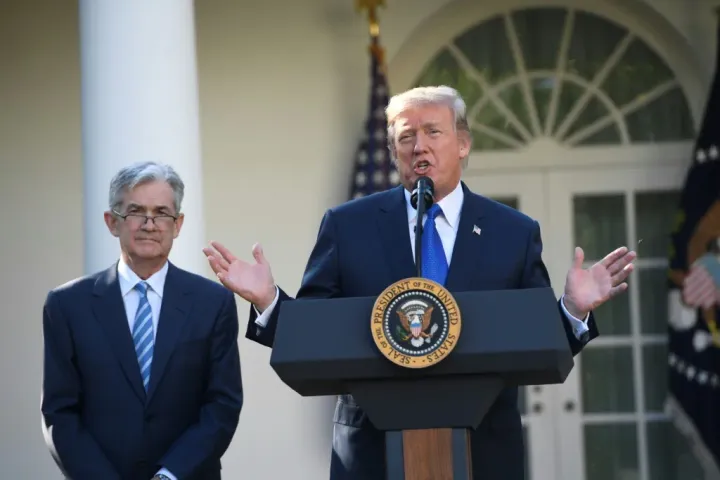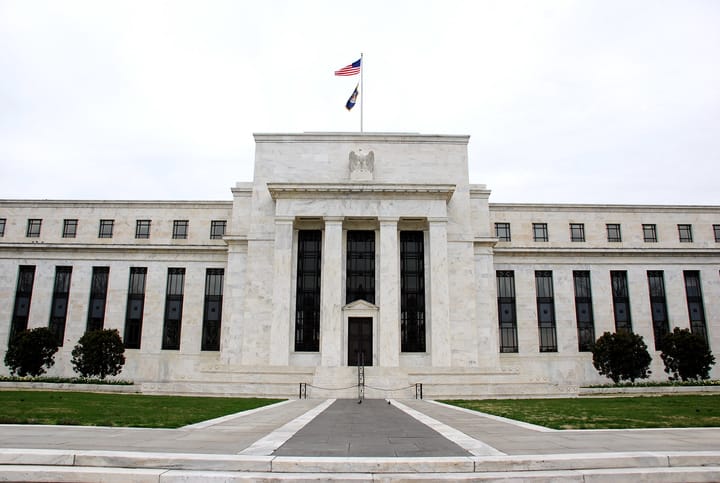What Is Powell Waiting For? The Five Crises That Forced the Fed to Intervene

Tensions in the U.S. debt market are rising, and many investors are now asking: will the Federal Reserve step in, once again? History shows that when markets teeter on the edge of chaos, the Fed often becomes the backstop. With Jerome Powell at the helm, questions about a potential intervention are intensifying, as Trump’s aggressive tariff policies threaten to spiral into full-blown economic turmoil.
While Wall Street has not yet officially entered a bear market, warning signs are mounting. The U.S. Treasury market, once considered the world’s safest haven, is now at the heart of a growing crisis of confidence. Should the situation worsen, history suggests that the Federal Reserve may be forced to step in once again — though today’s inflationary pressures could severely constrain its usual tools of intervention.
Here, we look back at five major episodes since 1998 when the Fed had no choice but to take decisive action.
1. 1998 – The Bailout of LTCM: Echoes of Today’s Debt Market
In 1998, the Fed was compelled to act after Long-Term Capital Management (LTCM), a hedge fund led by Nobel laureates and a former Fed vice chairman, collapsed due to its leveraged bets on debt markets. The fund's use of basis trading, a strategy also blamed for last week’s selloff in U.S. Treasuries, backfired dramatically.
When Russia defaulted and Asian markets faltered, LTCM’s holdings imploded. To avoid systemic fallout, the Fed slashed the federal funds rate by 25 basis points and orchestrated a private bailout.
“This action is intended to cushion the impact on the U.S. economy from the growing weakness in foreign economies,” the Fed stated.
2. 2001 – The Dot-Com Crash and 9/11
Just two years later, the tech bubble burst, followed by the tragic 9/11 terrorist attacks. Both shocks forced the Fed into emergency cuts: 50 basis points off the federal funds rate, followed by 25 more.
The Fed’s swift actions were crucial to restore liquidity and confidence, especially after part of the financial infrastructure was physically destroyed in the attacks.
“We will continue to supply ample liquidity to the financial markets as needed,” the Fed announced post-9/11.
3. 2008 – The Global Financial Crisis
Perhaps the most significant intervention came during the 2007-2008 financial crisis. Triggered by subprime mortgages and bank failures, including Lehman Brothers, the Fed not only cut rates to 0%, but also extended liquidity to non-banking institutions—a first in its history.
Later reviews criticized the Fed’s failure to foresee the risk buildup and its role in fueling the housing bubble by keeping rates too low for too long.
4. 2020 – The Covid-19 Pandemic: The Largest Fed Intervention Ever
The Covid crisis saw the Federal Reserve expand its balance sheet from $4 trillion to $9 trillion, flooding the markets with liquidity. With interest rates at 0% again and massive asset purchases, the Fed became the market’s de facto stabilizer.
This unprecedented scale of intervention, while stabilizing markets, also laid the groundwork for future inflationary pressures that are being felt today.
5. 2023 – The Collapse of Silicon Valley Bank
In March 2023, SVB's collapse marked the biggest U.S. bank failure since 2008. The fall was largely due to the sharp drop in bond prices, triggered by the Fed’s own rate hikes. SVB had accumulated large fixed-income holdings that depreciated rapidly.
To avoid contagion, the Fed created the Bank Term Funding Program, providing fresh liquidity to banks to prevent capital flight and calm investor panic.
2025: A New Crisis Brewing?
Trump’s tariff war is raising tensions in debt markets, and Powell is under pressure to act. But this time, inflation remains high, limiting traditional tools like rate cuts. Analysts suggest that any new intervention could look quite different—perhaps involving targeted liquidity support or unconventional monetary tools.
As Susan Collins, President of the Boston Fed, recently warned:
"We stand ready to support growth if needed."
But support today could mean imbalances tomorrow—a familiar Fed paradox.



